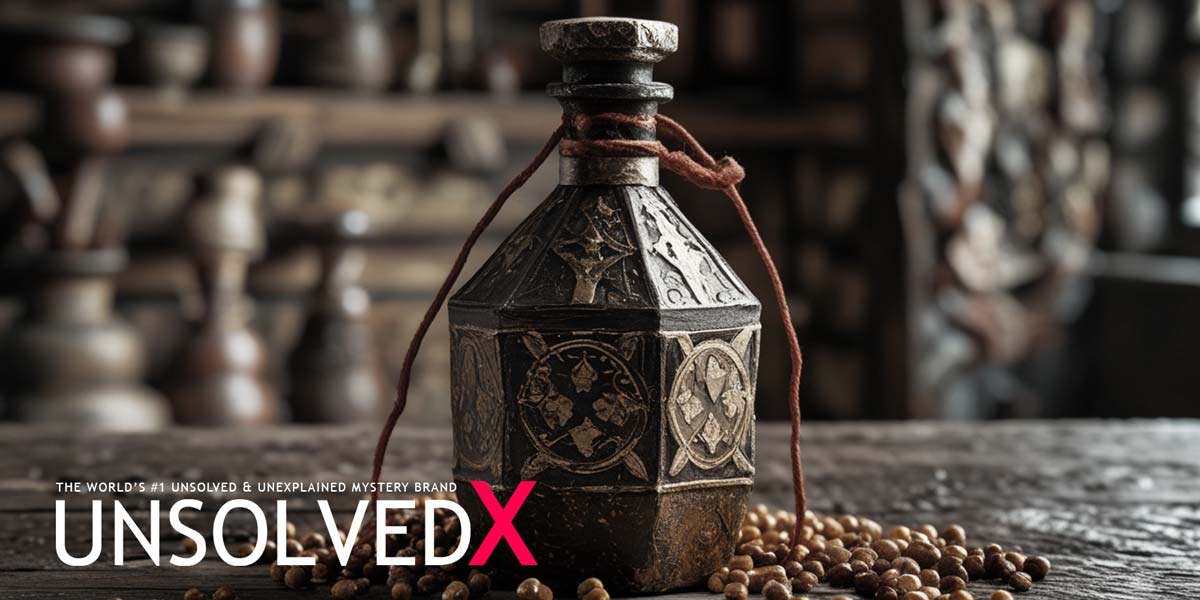Giulia Tofana: The Italian Poisoner of 17th-Century Italy
In the dimly lit alleys of 17th-century Italy, where women were bound by the iron chains of patriarchal marriage, a name whispered in hushed tones promised liberation: Giulia Tofana. Known as the “Queen of Poisons,” Tofana crafted a deadly elixir called Aqua Tofana, a colorless, tasteless poison that reportedly claimed the lives of over 600 men, primarily abusive husbands. This mysterious figure, operating in Palermo, Naples, and Rome, built an underground network that empowered women trapped in oppressive unions, offering them a lethal escape. Yet, the true extent of her crimes, her motivations, and even her fate remain shrouded in mystery, making Giulia Tofana one of history’s most enigmatic figures. Her story raises questions not only about her methods but also about the desperate circumstances that drove women to her door.
The allure of Giulia Tofana lies in the duality of her legacy: was she a cold-blooded serial killer or a savior of the downtrodden? Her poison, Aqua Tofana, was a masterwork of deception, disguised as a cosmetic or healing oil, blending seamlessly into the daily lives of Renaissance women. The mystery deepens with conflicting accounts of her life and death, leaving historians and true crime enthusiasts piecing together a puzzle with missing fragments. This article delves into the life of Giulia Tofana, the creation and impact of Aqua Tofana, and the enduring questions that keep her story alive in the annals of unsolved mysteries.
Little is known about Giulia Tofana’s early life, adding to her mystique. Born around 1620 in Palermo, Sicily, she is believed to have been the daughter or niece of Thofania d’Adamo, a poisoner executed in 1633 for murdering her husband. This grim family legacy likely shaped Tofana’s path, as she spent time among apothecaries, learning the art of concocting potions. Some historians speculate that Thofania passed down the recipe for Aqua Tofana, a potent blend of arsenic, lead, and possibly belladonna, though others argue Giulia developed it herself. Her intimate knowledge of poisons allowed her to create a substance that was odorless, tasteless, and nearly undetectable, making it the perfect weapon for women seeking to escape abusive marriages. Tofana’s operation began in Palermo but expanded as she moved to Naples and then Rome, where she established a covert network of women, including her daughter Girolama Spara, midwives, and even a priest, to distribute her deadly product. Her clients, often referred to her by word-of-mouth, were primarily lower-class women with no legal recourse against their husbands’ cruelty. Tofana’s empathy for their plight earned her a reputation as a friend to the desperate, but it also placed her at the heart of a dangerous enterprise.
The scale of Tofana’s operation is staggering, with some sources claiming she supplied poison for over 600 deaths between 1633 and 1651. However, these figures come from her alleged confession under torture, casting doubt on their accuracy. The lack of concrete records about her life—such as her birth date, appearance, or personal motivations—fuels the mystery. Was she driven by a desire to empower women, or was she a calculating profiteer exploiting their despair? Contemporary accounts, like those found in Palermo’s archives, describe her mother’s execution as brutal, suggesting a traumatic childhood that may have hardened Tofana’s resolve. Her ability to evade detection for nearly two decades speaks to her cunning, but it also highlights the societal blind spots that allowed her to thrive. Women’s subjugation in 17th-century Italy, where divorce was impossible and domestic abuse was ignored, created a fertile ground for her trade. Tofana’s story is not just about poison but about the systemic failures that made her services a grim necessity.
Aqua Tofana was a masterpiece of lethal ingenuity, designed to kill slowly and discreetly. Marketed as “Manna of St. Nicholas of Bari,” a supposed healing ointment, or as a powdered cosmetic, the poison blended seamlessly into a woman’s vanity table, raising no suspicion. Its primary ingredients—arsenic, lead, and possibly belladonna—were common in cosmetics of the time, which helped mask its true nature. Administered in small doses, Aqua Tofana worked insidiously: the first dose caused fatigue, the second brought stomach pains and vomiting, and the third or fourth ensured death, mimicking the symptoms of natural illness. This slow progression made it nearly impossible for physicians to diagnose poisoning, allowing women to widow themselves without arousing suspicion. Tofana’s meticulous instructions ensured her clients used the poison effectively, often mixing it into wine or soup. Her network, which included figures like midwife Giovanna de Grandis and fortune-teller Maria Spinola, operated with precision, distributing the poison from an apothecary shop in Rome’s Via di Corte Savella. The cultural impact of Aqua Tofana extended far beyond Tofana’s lifetime, becoming a byword for undetectable poison. Legends claim it influenced the French “Affair of the Poisons” in the late 17th century and was even blamed by Wolfgang Amadeus Mozart, who, on his deathbed in 1791, suspected he had been poisoned with Aqua Tofana. While historians dismiss Mozart’s claim as unsubstantiated, it underscores the poison’s enduring infamy. The recipe itself remains a mystery, as Tofana never recorded it, and its exact composition is pieced together from historical accounts. The secrecy surrounding Aqua Tofana’s formula and its widespread use raise chilling questions: how many deaths attributed to natural causes were actually murders? The poison’s legacy also intersects with other mysteries, such as the “Angel Makers of Nagyrév,” a group of Hungarian women who poisoned their husbands in the early 20th century, suggesting a pattern of women turning to poison as a desperate act of agency in oppressive societies. Tofana’s creation was not just a chemical weapon but a symbol of resistance, albeit one steeped in moral ambiguity.
Giulia Tofana’s reign as the “Queen of Poisons” ended abruptly in the 1650s, though accounts of her demise vary widely. The most dramatic narrative describes a client who, overcome with guilt, confessed to poisoning her husband’s soup, exposing Tofana’s network to the Papal authorities. Tofana sought sanctuary in a Roman church, but a rumor that she had poisoned the city’s water supply incited a mob to storm the church, leading to her arrest. Under torture, she reportedly confessed to facilitating 600 deaths, a number that may have been exaggerated to justify her execution. In 1659, Tofana, her daughter Girolama Spara, and several associates were executed in Rome’s Campo de’ Fiori, a public square notorious for executions. Some sources claim her body was thrown back into the convent that had sheltered her, a final act of desecration. However, historian Mike Dash argues that Tofana may have died peacefully in 1651, before the 1659 trial, suggesting the executed “Tofana” was a misidentification or a scapegoat. This discrepancy adds another layer of intrigue: did Tofana escape justice, or was her death as brutal as her mother’s? Giulia Tofana’s name may fade in and out of history, but the questions she leaves behind—about justice, morality, and survival—continue to haunt.










Comments
Comments section coming soon!